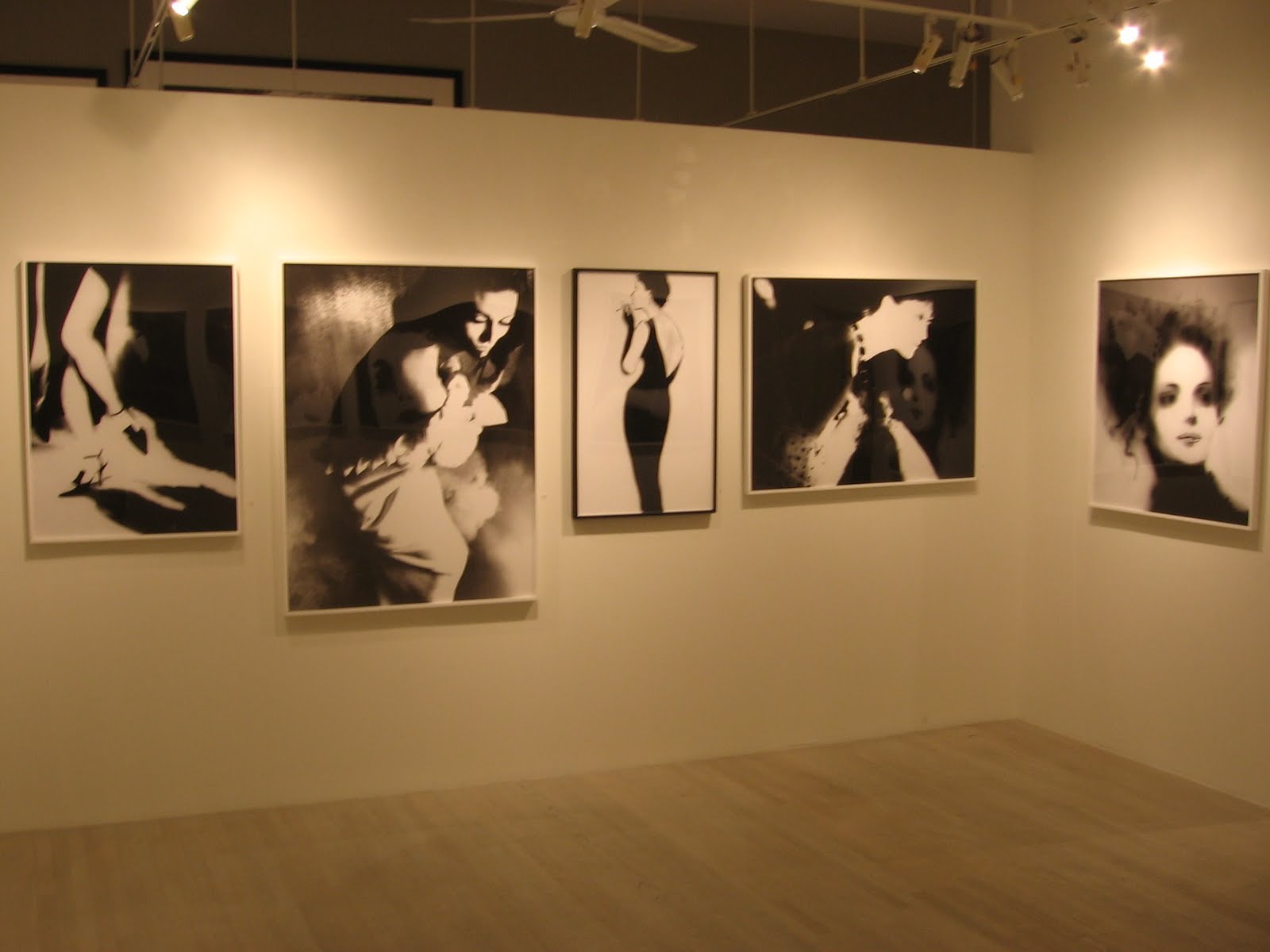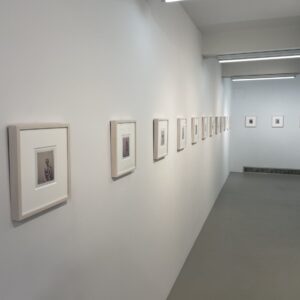 JTF (just the facts): A total of 26 black and white images, framed in either black or white (with or without mats), and hung in the winding main gallery space, the back viewing room, and the reception area. The recent prints are executed in three different processes: pigment, palladium-platinum, and gelatin silver. There are 20 pigment prints, either from 1950s/1960s negatives or from more recent 1990s/2000s negatives, in editions of 25. These prints range in size from approximately 30×40 up to 42×62, with many intermediate/individual sizes. There are 5 palladium-platinum prints, again either from the 1950s or the 1990s, in editions of 15. All of these prints are 26×30. And there is one gelatin silver print, from the 1950s, in an edition of 25. It is 20×24. The monograph of this show (published by Abrams) is available from the gallery for $50. (Installation shots at right.)
JTF (just the facts): A total of 26 black and white images, framed in either black or white (with or without mats), and hung in the winding main gallery space, the back viewing room, and the reception area. The recent prints are executed in three different processes: pigment, palladium-platinum, and gelatin silver. There are 20 pigment prints, either from 1950s/1960s negatives or from more recent 1990s/2000s negatives, in editions of 25. These prints range in size from approximately 30×40 up to 42×62, with many intermediate/individual sizes. There are 5 palladium-platinum prints, again either from the 1950s or the 1990s, in editions of 15. All of these prints are 26×30. And there is one gelatin silver print, from the 1950s, in an edition of 25. It is 20×24. The monograph of this show (published by Abrams) is available from the gallery for $50. (Installation shots at right.)
 Comments/Context: One of the great mysteries of photography is how the character of an image changes in relation to its printed size. While preferences between big and small vary, it’s clear that the impact of an intimate picture will be undeniably transformed when blown up to wall sized proportions. Most contemporary photographers have experimented with big prints at one time or another (to hold the wall with the same authority as paintings of the same size), and many have come to the conclusion that bigger is generally better, within some limits, especially if they are targeting contemporary art collectors, rather than those primarily interested in traditional photography.
Comments/Context: One of the great mysteries of photography is how the character of an image changes in relation to its printed size. While preferences between big and small vary, it’s clear that the impact of an intimate picture will be undeniably transformed when blown up to wall sized proportions. Most contemporary photographers have experimented with big prints at one time or another (to hold the wall with the same authority as paintings of the same size), and many have come to the conclusion that bigger is generally better, within some limits, especially if they are targeting contemporary art collectors, rather than those primarily interested in traditional photography. Lillian Bassman’s fashion images from the 1950s were, in their vintage form, already bleached and blurred; they were shadowy, delicate pictures with a strong essence of confident femininity. The new prints on view in this show are even more contrasty, the images in some cases looking almost like monochrome watercolors or ink paintings. Flowing gowns, strappy heels, feathered hats, and lace veils have all become even more polarized and grainy, dark eyes and indistinct faces made even more ethereal by the blinding whites and the obscure blacks.
Lillian Bassman’s fashion images from the 1950s were, in their vintage form, already bleached and blurred; they were shadowy, delicate pictures with a strong essence of confident femininity. The new prints on view in this show are even more contrasty, the images in some cases looking almost like monochrome watercolors or ink paintings. Flowing gowns, strappy heels, feathered hats, and lace veils have all become even more polarized and grainy, dark eyes and indistinct faces made even more ethereal by the blinding whites and the obscure blacks.Rating: * (one star) GOOD (rating system described here)
Transit Hub:
Through November 28th




